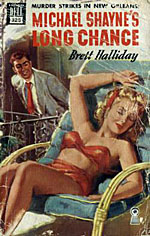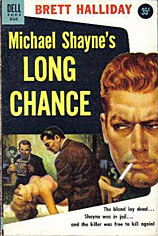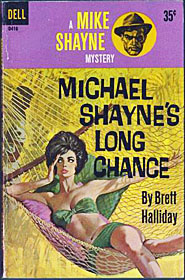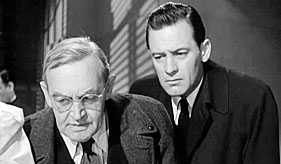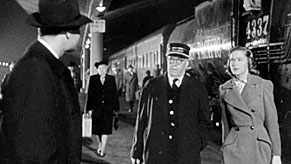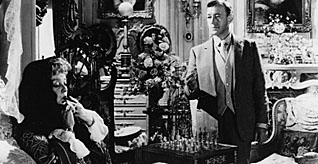Thu 8 Sep 2016
Reviewed by David Vineyard: THE NIGHT OF JANUARY 16th (1941).
Posted by Steve under Mystery movies , ReviewsNo Comments
THE NIGHT OF JANUARY 16th. Paramount Pictures, 1941. Robert Preston, Ellen Drew, Nils Asther, Clarence Kolb, Willard Robertson, Cecil Kellaway. Screenplay by Delmer Daves, Robert Pirosh and Eve Green, based on the play by Ayn Rand. Directed by William Clemens.
Luckily for everyone involved, the people who made this film saw it was impossible to make a film out of Ayn Rand’s famous gimmick trial play where the audience became the jury and determined the outcome by their verdict. So, stripped of the play’s gimmick and of Rand’s Objectivist philosophy of selfishness, what was left was a fairly decent mystery to wrap a bright comedy mystery around.
Stir up a good fast-paced script by a team of top talent like soon-to-be director Delmer Daves, Robert Pirosh, and Eve Green, with capable direction by William Clemens and attractive leads in Robert Preston and Ellen Drew, plus a good cast including Nils Asther and Cecil Kellaway, and the result was a bright little B film that played much better than many A efforts, almost as refreshing as the orange Daquiri that plays a role in the film’s finale.
Drew is Kit Lane, private secretary to Bjorn Faulkner (Nis Asther), who has his board of directors hot on his neck because of a $20 million dollar corporate shortfall. She’s worried about her boss, even flying back from her vacation, and that night, the January 16th of the title (prompting the famous “Where were you on the night of January 16th?†gag of a thousand stale jokes), she rushes to Faulkner’s penthouse only to see him thrown from his balcony to his death by a shadowy figure, having had his head bashed in first by a metal trophy of Atlas Shrugged beneath the globe (explaining where that book title came from).
Steve Van Ruyle is the newest member of the board, the nephew, fresh out of the Navy, of a late member who isn’t happy the $3 million he just inherited is part of the $20 million missing from the company funds. He convinces the chairman of the board, Tilton (Clarence Kolb), to let him bail Lane out when she is arrested by Inspector Donegan (Willard Robertson) as a suspect in Faulkner’s death expecting she will lead him to the money.
Of course the two fall in love, complicating things that get even worse when Kit is charged and put on trial. (Justice moved fast in those days, apparently.) Steve hopes to spring her so he can find the money and because he is attracted to her, and does. With a diary Faulkner left behind in code and the murder weapon, studded with jewels that represent new locations the company has interests, they stumble onto the mysterious Anton Haraba, whose name is an anagram of South American locations they hope will lead to the $20 million and the killer.
Eluding the police with the help and hindrance of a very drunk Cecil Kellaway, in a nice bit, the two charter a plane to Havana to find Haraba, and find more trouble than they expected with police and a killer after them.
Preston and Drew keep the proceedings moving at a nice pace with bits and pieces from the play thrown in the trial scenes and the plot largely skimmed from the play (some characters, including the one played on Broadway by Walter Pidgeon, are written out completely). Quite a bit is left out, but frankly it doesn’t really matter, because I have read and seen the play and this film is much more entertaining and much less heavy-handed and melodramatic, and having audiences vote for the ending of the film was the kind of thing better suited to William Castle hucksterism than a good B comedy mystery.
The play was done at least three times on television here and in England, live a few times, and if you want to see it, your best bet would be if you can find an Kinescope of one of them, the last in 1960 for ITV Theater. Unless you just want to see a famous play or you are a Randian completist, though, I suggest this is by far the most entertaining version of the play possible, an old fashioned swift-paced comedy mystery, nicely acted and timed.
